Which AI Chatbot Platform to Use? ¶
For individuals and organizations who are unfamiliar with the development of conversational AI solutions, this seems like a daunting question to answer because there are hundreds if not thousands of chatbot options available out there.
Like adopting a child, investing in a chatbot solution is not a light decision nor a short-term investment. We would like to share with you the tips on whether and how to make a wise AI investment. In particular, we recommend three quick rounds of due diligence plus a deep dive.
Round 1: Decide on whether you'd need a chatbot at all¶
Just like making any investment, it's always good to start with a justifiable investment rationale and a clear investment goal. The same principle should also be applied to a chatbot investment. First, use this quick assessment to decide whether it is worth investing in a chatbot solution.
Round 2: Decide on which type of chatbot you'd need¶
Once you decide that you do want to invest in an AI chatbot solution, a simple Google search will present you with hundreds if not thousands of AI chatbot platforms! Almost all of them claim that they are powered by generative AI and all seem to offer similar features, giving the first impression that any of them would do the job.
In reality, not every chatbot platform is created equal or is a perfect fit for the chatbot solution you have in mind. For example, many of our customers mentioned to us before they found Juji, they had explored 20+ chatbot platforms but failed to find the one that meets their needs.
To help you expedite your chatbot platform selection process, in this round, we help you identify the type of chatbots you need before diving into the nitty-gritty details of an AI chatbot platform. This step is utterly important since different types of chatbots require different types of technologies and support, which in turn affects the type and size of investment you'd need to make.
1. Question-Answering Chatbots (QA Chatbots)¶
The main task for these chatbots is to answer user questions based on public and/or proprietary information. For example, universities may use a chatbot on their website to answer student questions about learning programs (see Image 1.1 below), or hospitals may use a chatbot in their mobile app to answer patient questions on medical services. Very similar to the behavior of ChatGPT, this type of chatbot is typically driven by user questions and assumes that all questions can be answered in a SINGLE response, which is not the case in many real-world applications.
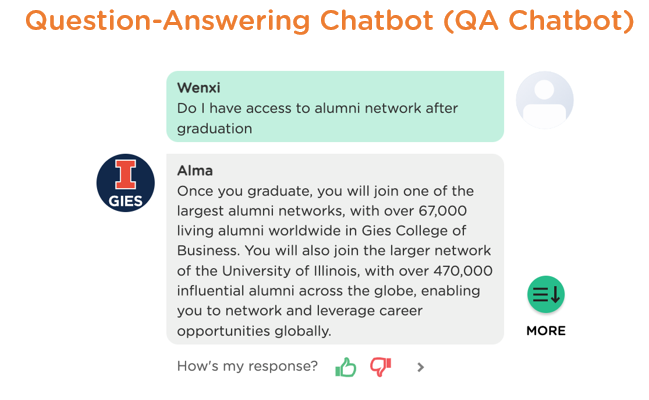
2. Question-Asking Chatbots (Survey/Interview Chatbots)¶
The main task for these chatbots is to ask user questions and gather information from an intended audience. Very similar to an online survey, this type of chatbot has been used to gather information for research studies, personality assessments, and job interviews (Image 1.2 provides an example of an interview chatbot). Typically, this type of chatbot is NOT capable of answering user questions including clarification questions during the process.
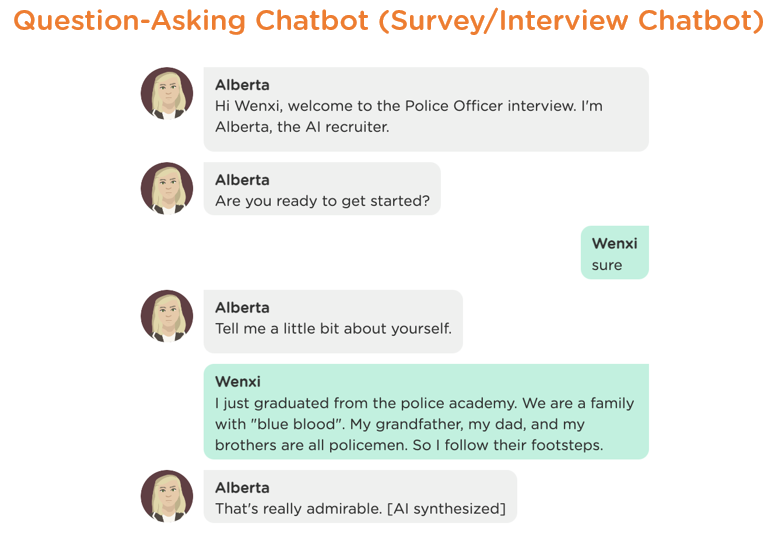
3. Proactive, Two-Way Conversational Chatbots (Proactive Chatbots)¶
In real-world applications, chatbots often need to perform multiple tasks simultaneously to deliver desired user experience and accomplish the business objectives. For example, a QA-only chatbot on a university website may be inadequate because the same chatbot must also ask questions to gather necessary information from the visitors before it can answer their questions (see Image 1.3 below). Similarly, a survey-only chatbot for job interviews may be unsatisfactory because it must also answer candidate questions regarding the positions and the organization during the interview. This third type of chatbot is a hybrid of the QA and survey chatbots, capable of both asking and answering questions during a conversation, known as Proactive Chatbots.

Round 3: Evaluate AI Chatbot Platforms by the Type of Chatbot Needed¶
Once you decide the type of AI chatbot you need, you can then use the relevant chatbot KPIs to evaluate AI chatbot platforms. Below lists the chatbot KPIs relevant to each type of chatbot.
Chatbot KPIs for evaluating AI platforms for QA Chatbots¶
- Answer quality and quality control
- Handling complex Q&A
- Real-time chatbot behavioral monitoring and improvements
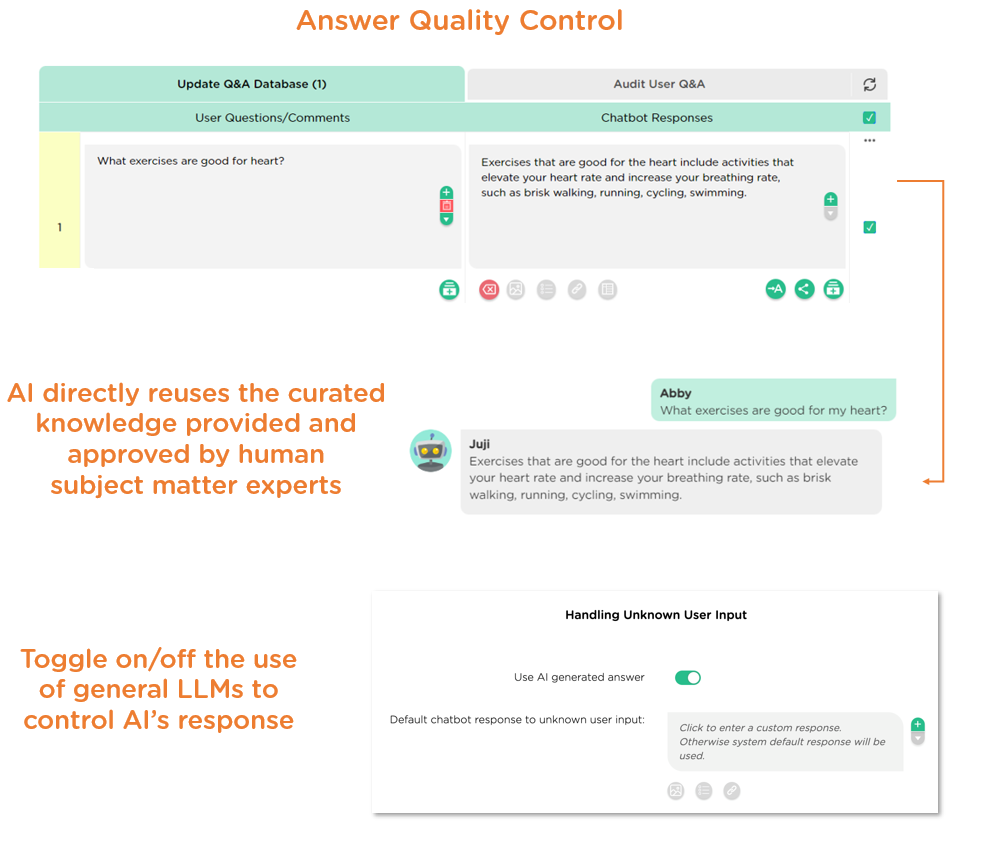
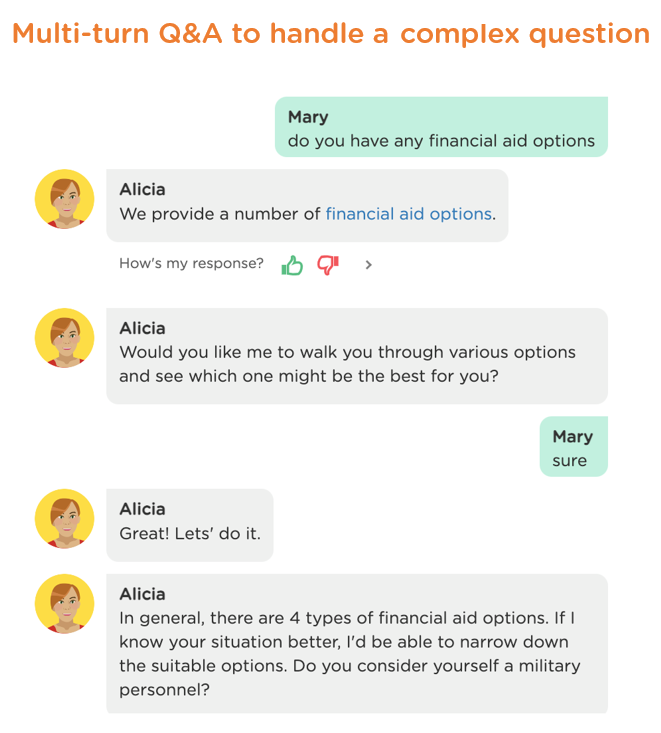
Chatbot KPIs for evaluating AI platforms for Interview Chatbots¶
- Abilities to elicit quality user responses
- Abilities to handle user digressions
- Abilities to generate interview summary reports and analytics
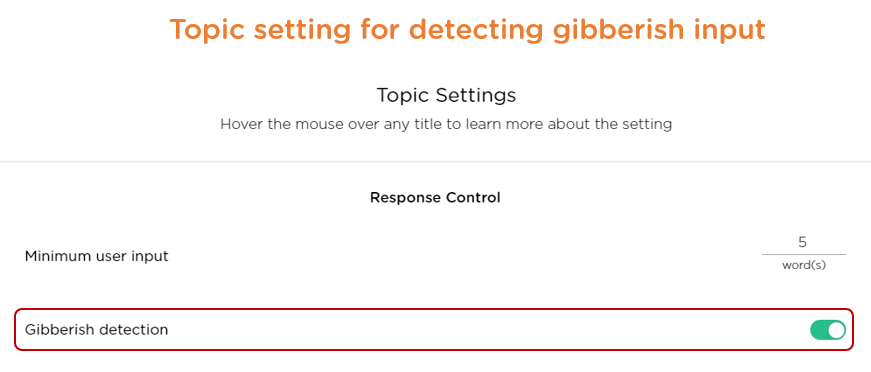
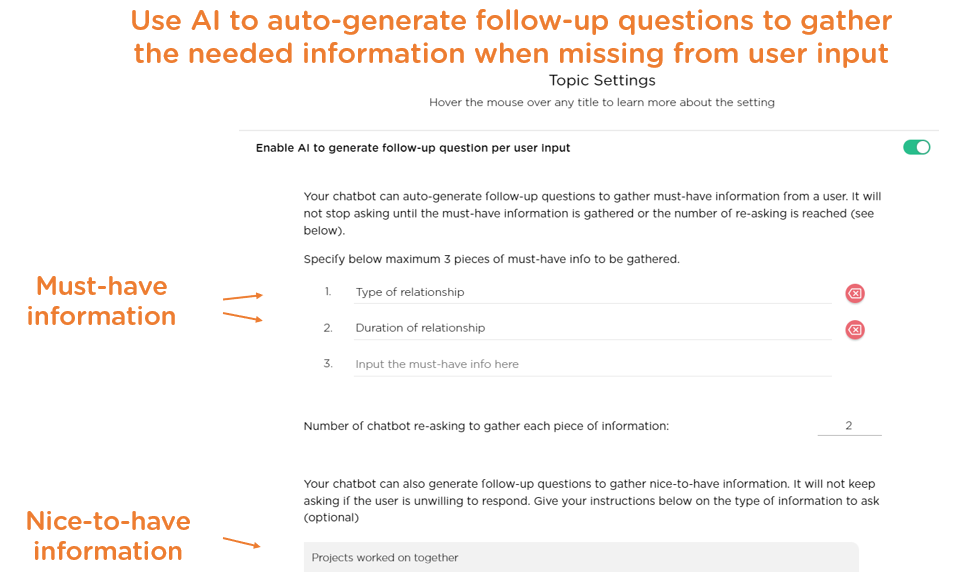
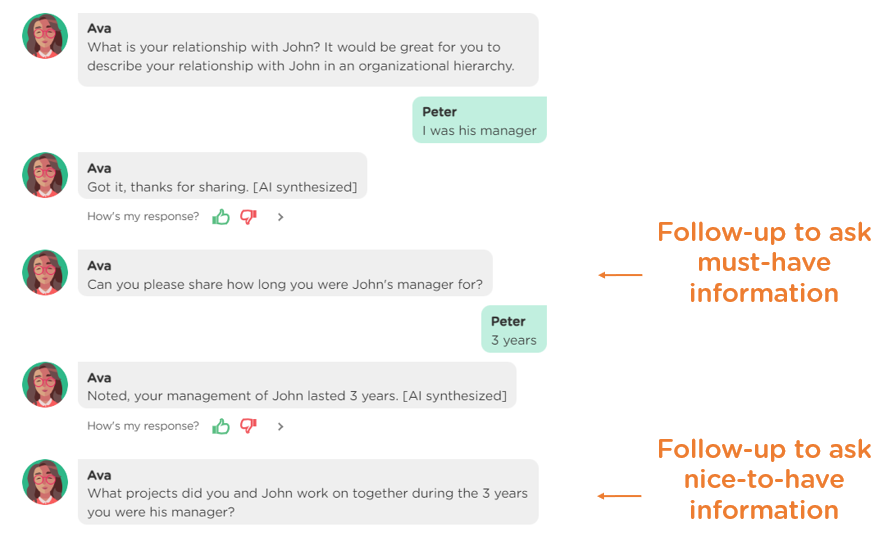
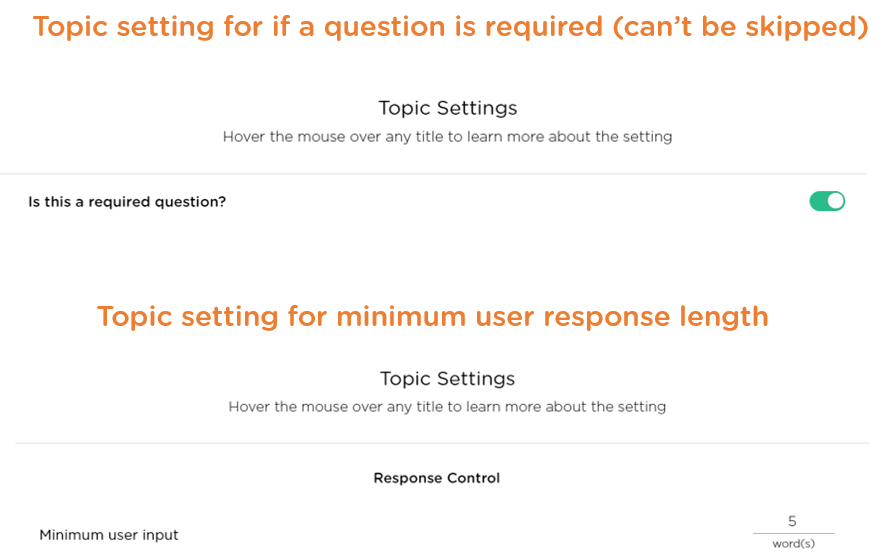

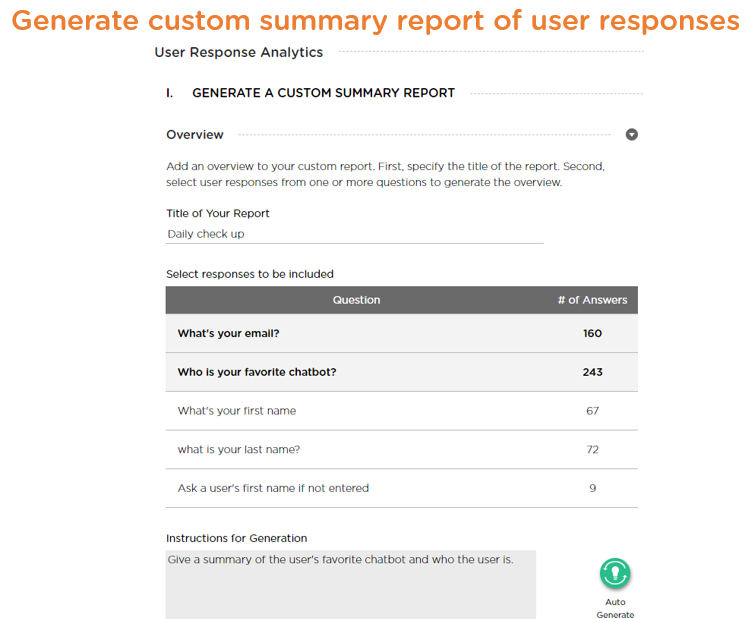
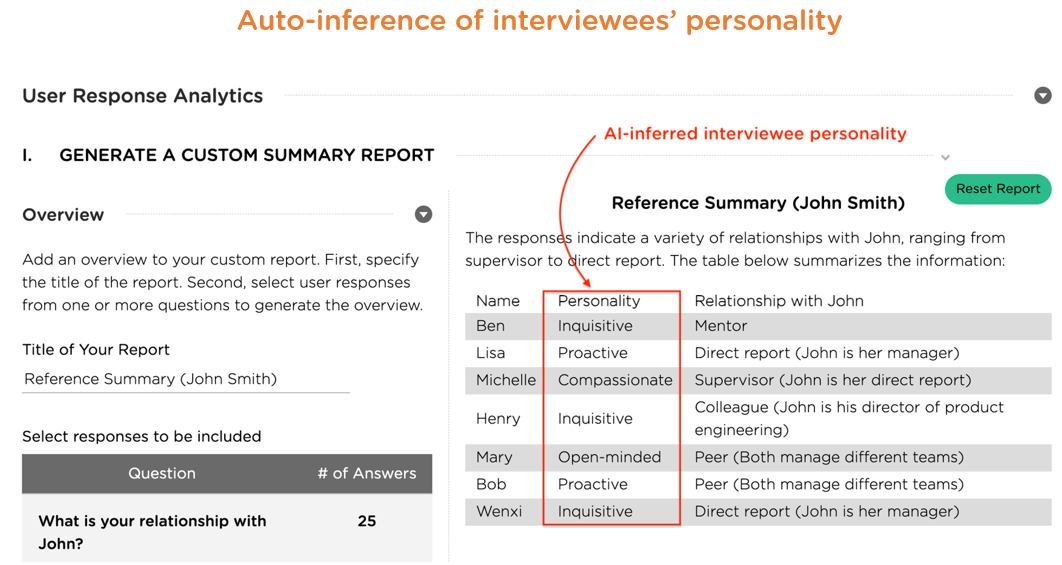
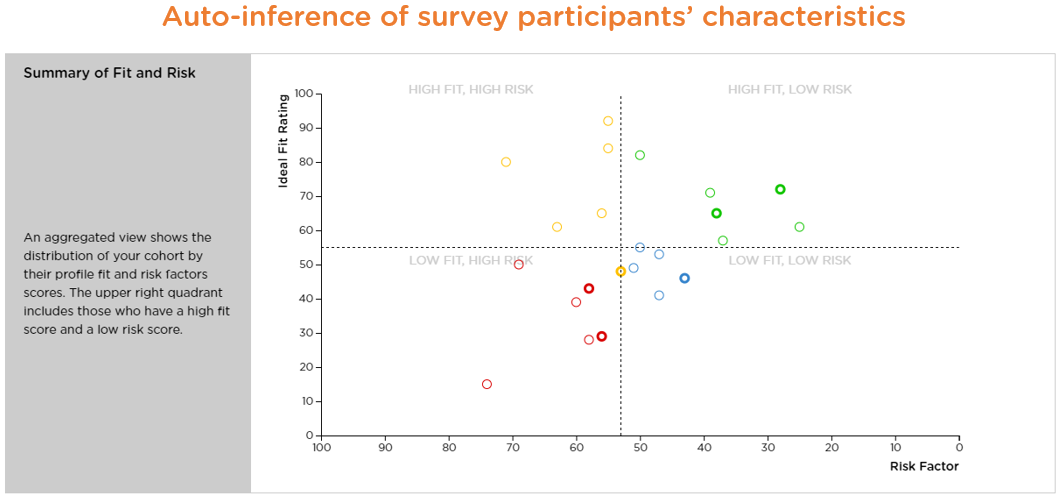
Chatbot KPIs for evaluating AI platforms for Proactive Chatbots¶
- Interactional intelligence
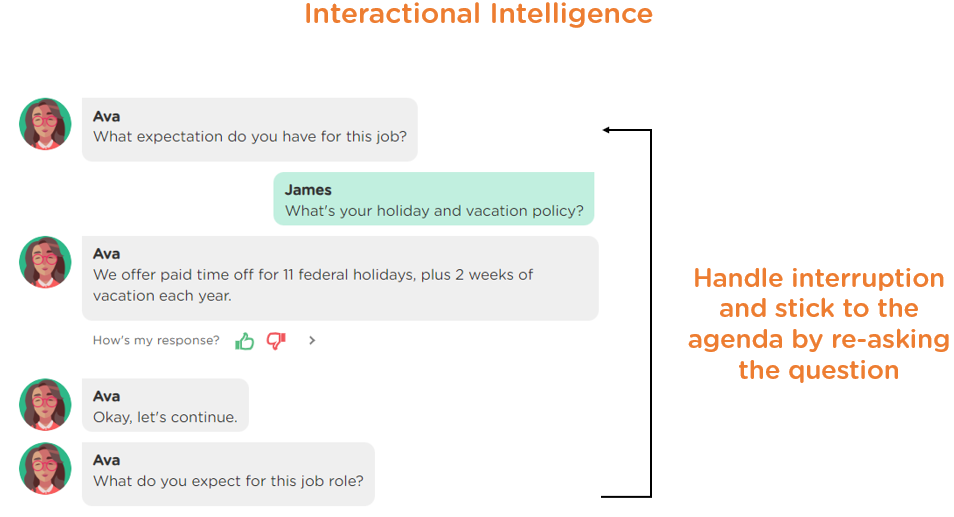
- Personal intelligence
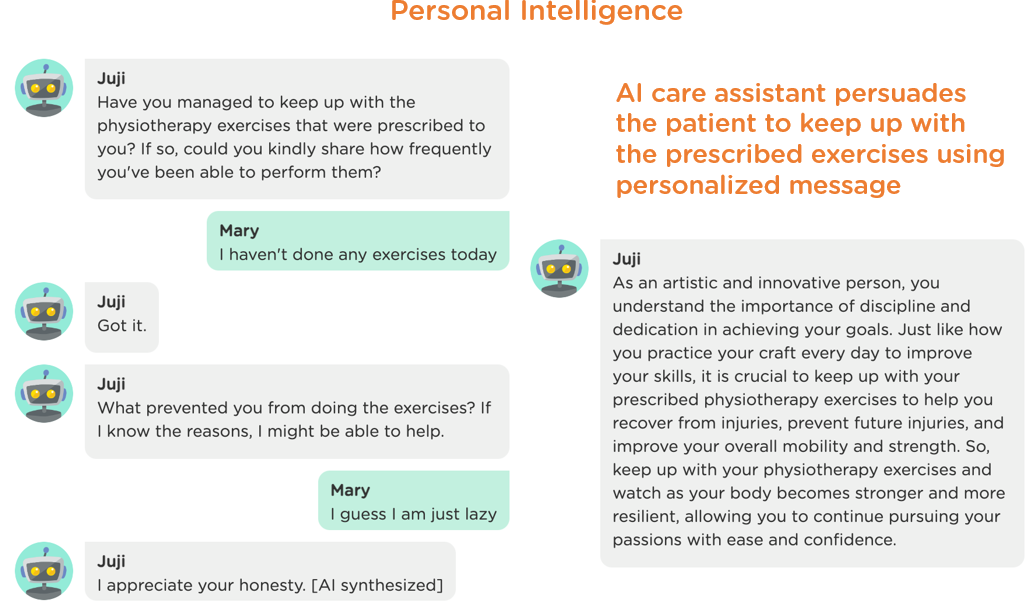
- Prudence
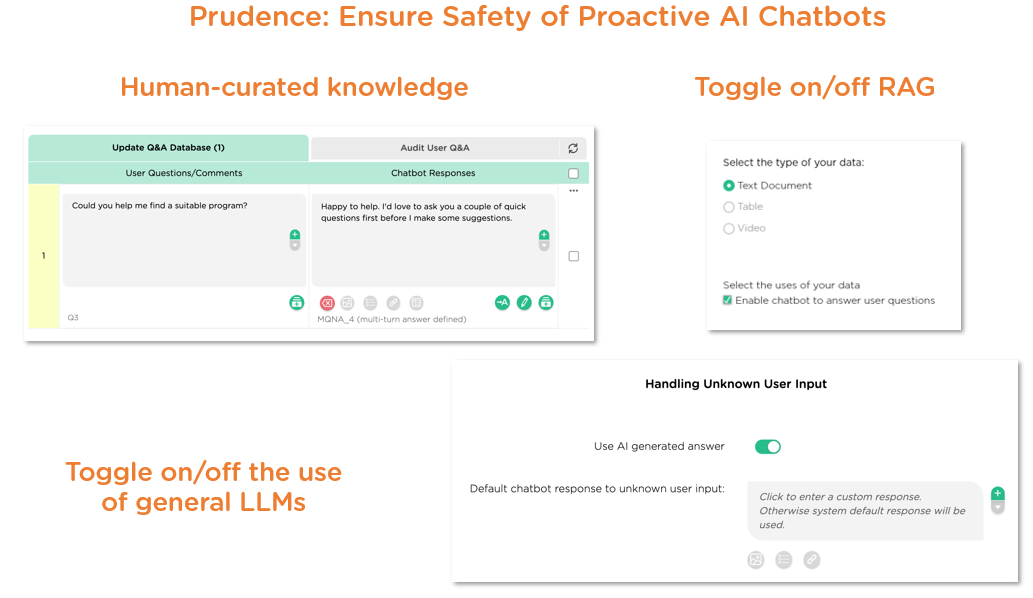
- Plug-n-play
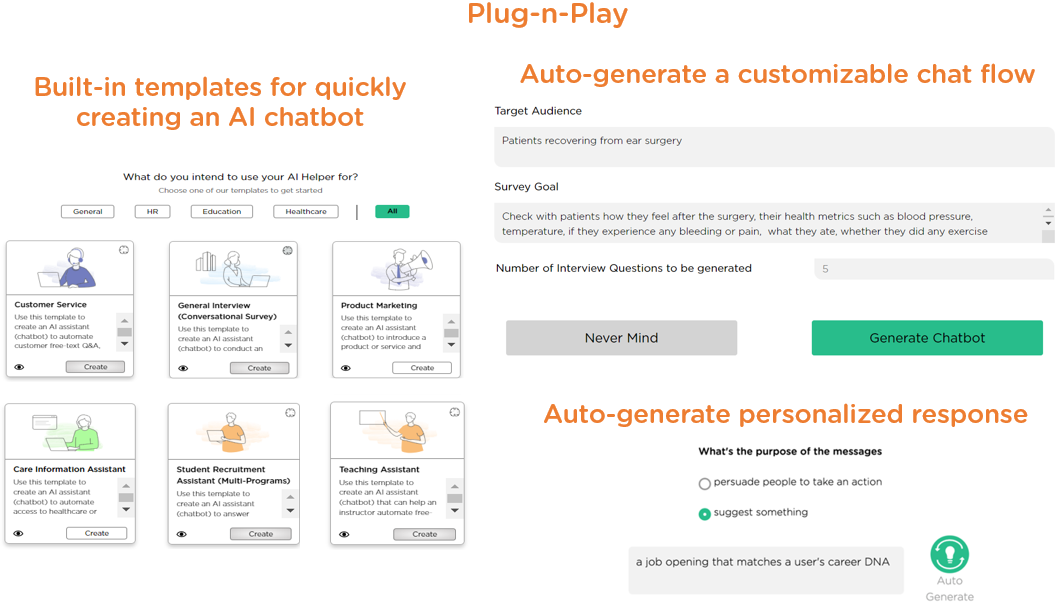
For a detailed description of these KPIs, please visit this blog
Take a Deep Dive: Compare Chatbot Options by 3 Factors¶
The the first 3 rounds could help you quickly decide whether it is worth investing in an AI chatbot solution and weed out most of the chatbot options that will not help you fulfill your chatbot goals. Assume now that you have 3-5 chatbot platforms to do a deep dive on. We recommend that you evaluate and compare these selected platforms along three factors as listed below.
I. User Experience and Business ROI¶
A chatbot or conversational AI agent is meant to scale out human-human engagements (e.g., university enrollment counselors with prospective students and college academic advisors with existing students). Since a chatbot acts on the behalf of an organization, a key criterion to evaluate a chatbot platform is to assess how well a chatbot engages with a user and delivers satisfactory user experience while maximizing business ROI, such as improving prospective student conversion and existing student retention rate. When evaluating how well a chatbot option can deliver satisfactory user experience and business ROI, you want to compare available chatbot options on the following aspects:
-
How well can a chatbot drive an empathetic and productive two-way conversation?
-
How well can a chatbot deeply understand the psychographic characteristics (e.g., interests, unspoken needs, and personality) of its users from the conversations and use such insights to personalize machine or human advices?
II. Time to Value and Cost of Ownership¶
If not careful, investing in a chatbot solution could become a nightmare as if investing in a bottomless pit that requires constant new investments (e.g., time and money) but with little return of value. To avoid the pitfalls, it is important to deep dive into chatbot options and compare the following:
-
How much AI training do I need to do up front to teach a chatbot before it can function and deliver value for me?
-
What kind of customizations are supported?
-
What resources are required to do the customization (e.g., non-IT subject matter experts, dedicated IT personnel, or professional services)?
-
How long will it take to make all the customizations?
-
How do I test, iteratively improve, and deploy a chatbot solution? How easy and fast can I do this?
-
What kind of reporting and analytics are available for me to access? Are they real-time data?
-
How can I monitor and maintain or upgrade my chatbot? Will the maintanence or upgrades interrupt ongoing conversations?
III. Enterprise-Scale Adaptibility and Extensibility¶
When an organization adopts a chatbot solution, it is often the case that the organization wishes to build upon the current solution and support new users of the chatbot. Thus it is important to evaluate whether such a solution can be easily and quickly adapted to support new tasks or be extended to support multiple tasks. For example, when an educational institute starts with a chatbot solution to support student recruitment, it may want to extend the chatbot to help prospective students in their application process. Likewise, the educational institute may want to add additional chatbots to help student retention or alumni engagement. To evaluate how quickly and easily a chatbot solution can be easily extended or reused in whole or partially to support new tasks, ask the following:
-
How quickly and easily can I reuse and adapt an existing chatbot to support a new task?
-
How quickly and easily can I reuse and adapt an existing chatbot to support multiple tasks?
-
How can I reuse just part of a chatbot (e.g., Q&A only) in another chatbot?
-
How can I connect a chatbot to external resources, such as CMS or CRM system?
-
How can I extend a chatbot with external functions (e.g., my own algorithms or third-party functions such as language translations)?
-
How can I white-label a chatbot or embed a chatbot into my propreitary solutions?
Build Your Own Chatbot Comparison Table¶
To help your Round-2 evaluation of multiple chatbot options, we have created a set of detailed comparison criteria by the 3 factors mentioned above:
For your convenience, we list all the evaluation dimensions in a table below, supplemented with concrete examples wherever possible to help explain each evaluation dimension. While we use building an educational chatbot solution as an example, the evaluation criteria should be broadly applicable for building any chatbot solutions.
You can also download the comparison template in an Excel file to build your own comparison sheet and evaluate different chatbot options by checking off each dimension for each chatbot option.
Click on the "+" button to zoom in on the comparison table. You can also download the pdf for offline review.
What's Next¶
Ready to create your own AI chatbot? Check out these design tips for creating super helpful and user-pleasing AI chatbots to help you scale your business and delight your audience.